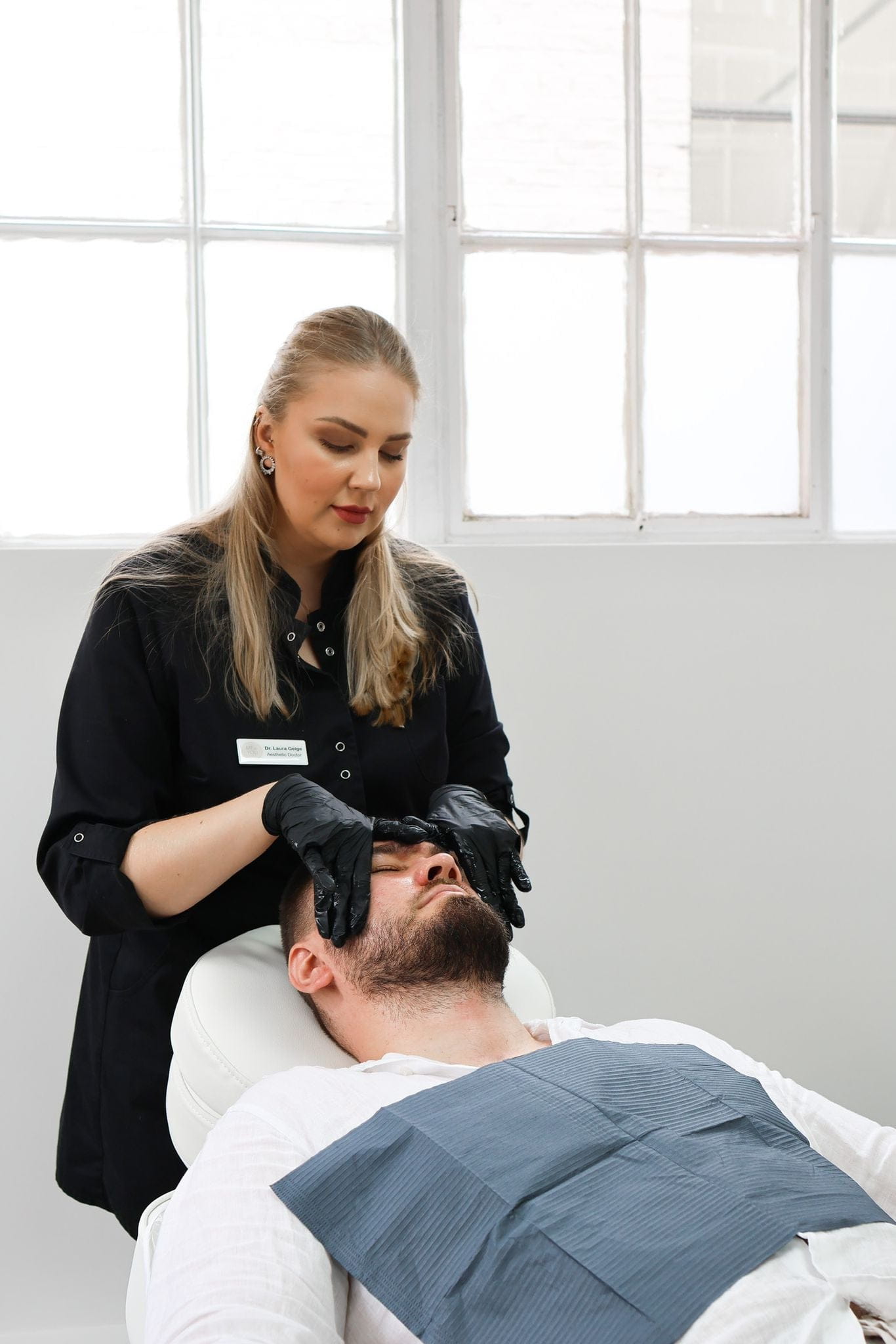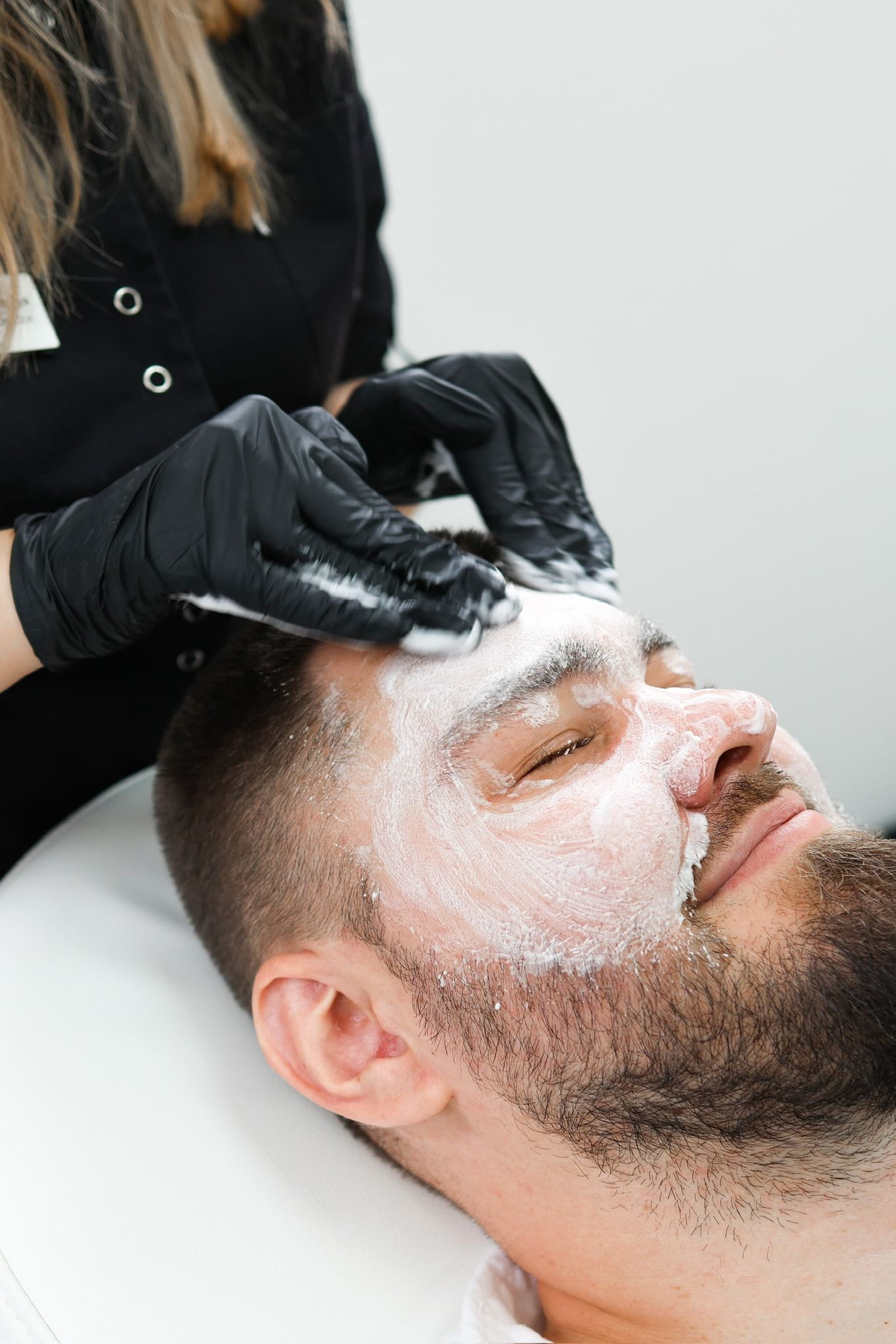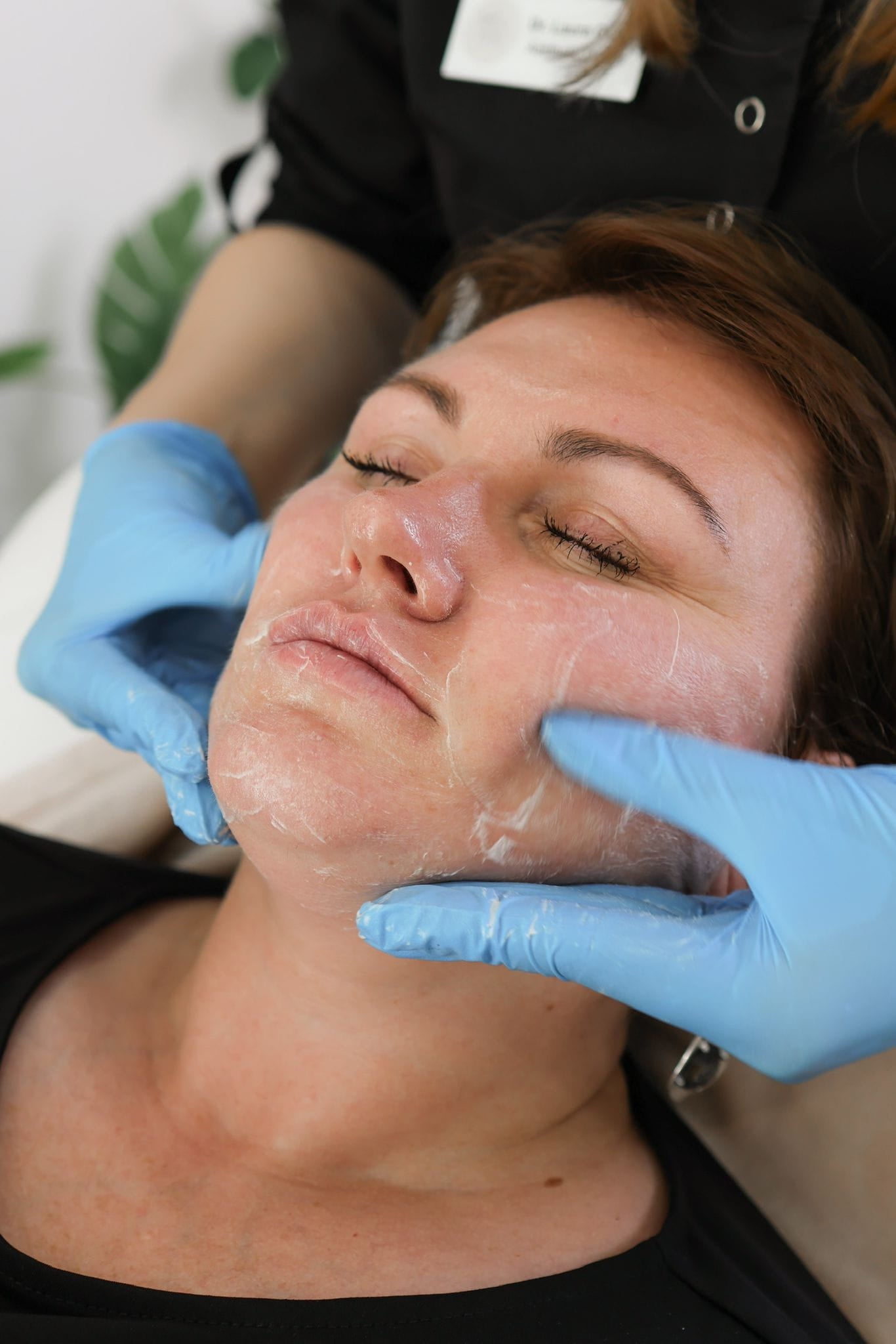Cosmelan’s Efficacy on Oily Skin
For individuals battling oily skin and hyperpigmentation, finding an effective solution can be challenging. Cosmelan, a renowned depigmentation peel, has gained popularity as a potential answer. This treatment utilizes a blend of potent ingredients to address both oil production and pigmentation concerns, offering a comprehensive approach to improving the complexion.
Benefits for Oily Skin
Cosmelan’s efficacy on oily skin stems from its ability to regulate sebum production while targeting hyperpigmentation. Its unique formulation contains powerful antioxidants and exfoliating agents that work synergistically to minimize oiliness, reduce acne breakouts, and even out skin tone.
For individuals with oily skin, Cosmelan can deliver numerous benefits. By controlling excess sebum, it helps prevent clogged pores and minimizes the occurrence of acne. The treatment also effectively tackles hyperpigmentation, resulting in a brighter and more even complexion.
Concerns and Considerations for Oily Skin
Cosmelan’s efficacy on oily skin stems from its ability to regulate sebum production while targeting hyperpigmentation. Its unique formulation contains powerful antioxidants and exfoliating agents that work synergistically to minimize oiliness, reduce acne breakouts, and even out skin tone.
For individuals with oily skin, Cosmelan can deliver numerous benefits. By controlling excess sebum, it helps prevent clogged pores and minimizes the occurrence of acne. The treatment also effectively tackles hyperpigmentation, resulting in a brighter and more even complexion.
However, some concerns and considerations are important for individuals with oily skin seeking Cosmelan treatment. It’s crucial to consult with a qualified dermatologist who can assess your skin type, condition, and medical history to determine if Cosmelan is suitable for you.
During the initial phases of treatment, some temporary side effects may occur, such as redness, peeling, or sensitivity. It’s important to follow the dermatologist’s instructions carefully regarding post-treatment care to minimize these effects and promote healing.
Additionally, individuals with oily skin might experience a period of increased oil production during the initial weeks after treatment as the skin adjusts to the new sebum regulation. This is typically temporary and resolves as the skin acclimates.
Mechanism of Action in Oily Skin
Oily skin often presents challenges in achieving a clear and even complexion, as excess sebum can contribute to acne breakouts and hyperpigmentation. Understanding the mechanisms behind Cosmelan’s effectiveness on oily skin is crucial for assessing its suitability.

Impact on Sebum Production
Cosmelan’s mechanism of action involves targeting both sebaceous gland activity and hyperpigmentation. Its active ingredients work synergistically to regulate sebum production, minimizing excess oiliness. Antioxidants present in the formula combat free radical damage, which can contribute to inflammation and skin discoloration.
The exfoliating agents in Cosmelan promote cell turnover, aiding in the removal of dead skin cells and unclogging pores. This helps prevent acne breakouts and allows for better penetration of other ingredients into the skin.

Influence on Melanin Synthesis
Cosmelan’s impact on melanin synthesis is multi-faceted. The treatment incorporates potent antioxidants that can inhibit tyrosinase, the enzyme responsible for melanin production. By reducing tyrosinase activity, Cosmelan helps to minimize melanin formation and lighten existing pigmentation.
Furthermore, the exfoliating agents in Cosmelan contribute to a more even skin tone by removing the outer layer of skin, which often carries concentrated pigment. This allows for fresher, less pigmented skin to emerge.
Suitable Candidates for Cosmelan on Oily Skin in the UK
For individuals with oily skin, finding a solution for hyperpigmentation and excess oil can be challenging. Cosmelan, a popular depigmentation peel, offers a potential answer by addressing both concerns simultaneously.
Factors Affecting Suitability
Cosmelan’s effectiveness on oily skin is attributed to its ability to regulate sebum production and target hyperpigmentation. The treatment utilizes potent antioxidants and exfoliating agents that work synergistically to minimize oiliness, reduce acne breakouts, and even out skin tone.
While Cosmelan can be beneficial for individuals with oily skin, several factors influence its suitability. A qualified dermatologist should assess your individual skin type, condition, and medical history to determine if Cosmelan is appropriate for you.
Considerations include the severity of oiliness, the presence of acne or other skin conditions, and any pre-existing sensitivities or allergies.
Additionally, it’s crucial to be aware of potential side effects. Temporary redness, peeling, and sensitivity can occur during the initial phases of treatment. Following post-treatment care instructions diligently is essential for minimizing these effects and promoting healing.
Skin Type Specifics
Cosmelan is a depigmentation peel that has gained popularity for addressing both hyperpigmentation and oily skin. It contains potent antioxidants and exfoliating agents that work together to regulate sebum production, reduce acne breakouts, and even out skin tone.
Individuals with oily skin can benefit from Cosmelan by controlling excess oil, preventing clogged pores, and minimizing acne occurrences. The treatment also effectively tackles hyperpigmentation, leading to a brighter and more even complexion.
However, it’s important to consult a qualified dermatologist before undergoing Cosmelan treatment, as they can assess your individual skin type and condition to determine its suitability.
During the initial treatment phases, temporary side effects like redness, peeling, or sensitivity may occur. It’s crucial to follow your dermatologist’s post-treatment care instructions carefully to minimize these effects and promote healing.
Potential Side Effects and Risks on Oily Skin
While Cosmelan offers potential benefits for those with oily skin, it is essential to understand the potential side effects and risks associated with this treatment.
Common Reactions
Individuals with oily skin may experience temporary redness, peeling, or sensitivity during the initial phases of Cosmelan treatment as the skin adjusts to the active ingredients.
It’s important to note that some people with oily skin might experience a period of increased oil production in the weeks following treatment as their skin regulates sebum production. This is typically a temporary phase.
As with any skincare treatment, there’s always a risk of allergic reactions or adverse skin responses.
It’s crucial to have a consultation with a dermatologist before undergoing Cosmelan to ensure it’s the right treatment for your specific skin type and concerns.
Addressing Potential Complications
Potential side effects associated with Cosmelan on oily skin can include temporary redness, peeling, and sensitivity during the initial phases of treatment. The skin may also experience increased oil production temporarily as it adjusts to the treatment.
It is important to note that some individuals might be more susceptible to allergic reactions or adverse skin responses.
Alternative Depigmentation Options for Oily Skin
Finding a solution for both oily skin and hyperpigmentation can be challenging. Cosmelan, a popular depigmentation peel, offers a potential answer by addressing both concerns simultaneously. Cosmelan’s effectiveness on oily skin is attributed to its ability to regulate sebum production and target hyperpigmentation.
Chemical Peels vs Cosmelan
For individuals battling oily skin and hyperpigmentation, finding an effective solution can be challenging. Cosmelan, a renowned depigmentation peel, has gained popularity as a potential answer. This treatment utilizes a blend of potent ingredients to address both oil production and pigmentation concerns, offering a comprehensive approach to improving the complexion.
Chemical peels offer various options for addressing hyperpigmentation on oily skin. Different types of chemical peels utilize varying acids to exfoliate the skin and target pigmentation. Glycolic acid peels are popular choices due to their ability to dissolve dead skin cells and improve skin texture, reducing the appearance of hyperpigmentation.
Salicylic acid peels are particularly effective for oily skin as they penetrate pores to unclog them and address acne breakouts, which can contribute to hyperpigmentation.
Cosmelan stands apart from other chemical peels due to its unique formulation and targeted approach. Its blend of potent antioxidants, exfoliating agents, and depigmenting ingredients work synergistically to address both sebum production and pigmentation concerns effectively.
While both chemical peels and Cosmelan can be beneficial for oily skin with hyperpigmentation, the choice between them depends on individual needs and skin concerns. A consultation with a qualified dermatologist is essential to determine the most suitable treatment option.
Laser Treatments as an Alternative
Alternative depigmentation options for oily skin exist beyond chemical peels, including laser treatments.
Laser therapy utilizes targeted light energy to break down melanin pigment in the skin, effectively addressing hyperpigmentation.
Different types of lasers are used depending on the specific pigmentation concern and skin type. Some common laser treatments for oily skin with hyperpigmentation include:
• **Fractional lasers:** These lasers create microscopic wounds in the skin, stimulating collagen production and promoting cell turnover, which can help reduce the appearance of hyperpigmentation.
• **Intense pulsed light (IPL):** This treatment uses broad-spectrum light to target melanin pigments, reducing their visibility and improving skin tone.

• **Q-switched lasers:** These lasers emit high-energy pulses that break down pigment molecules, making them easier for the body to eliminate.
Laser treatments can be effective in addressing hyperpigmentation on oily skin, but they require careful consideration and consultation with a qualified dermatologist.
Long-Term Maintenance for Oily Skin Treated with Cosmelan
Maintaining clear, balanced skin after Cosmelan treatment is crucial for achieving lasting results on oily skin. A dedicated long-term maintenance routine is essential to preserve the improvements achieved during the initial treatment phases.
Lifestyle Modifications
Long-term maintenance for oily skin treated with Cosmelan involves several key lifestyle modifications and skincare practices.
Protecting your skin from the sun’s harmful UV rays is paramount, as sun exposure can trigger pigmentation recurrence and counteract the treatment’s effects. Consistently wear broad-spectrum sunscreen with an SPF of 30 or higher, even on cloudy days.
Staying hydrated is crucial for maintaining overall skin health and supporting its natural barrier function. Drink plenty of water throughout the day to help flush out toxins and keep your skin properly nourished.
Adopting a healthy diet rich in fruits, vegetables, and antioxidants can contribute to clearer skin. Antioxidants combat free radical damage that can affect pigmentation and exacerbate oiliness.
Managing stress levels is important, as stress can trigger hormonal fluctuations that may worsen oil production and breakouts. Incorporate stress-reducing practices such as exercise, meditation, or yoga into your daily routine.
Continuing to use the prescribed post-treatment products provided by your dermatologist is essential for maintaining skin health and extending the benefits of Cosmelan. These products often contain ingredients that help regulate sebum production, prevent hyperpigmentation, and promote overall skin balance.
Topical Products and Regimens
Maintaining clear, balanced skin after Cosmelan treatment is crucial for achieving lasting results on oily skin. A dedicated long-term maintenance routine is essential to preserve the improvements achieved during the initial treatment phases.
Long-term maintenance for oily skin treated with Cosmelan involves several key lifestyle modifications and skincare practices. Protecting your skin from the sun’s harmful UV rays is paramount, as sun exposure can trigger pigmentation recurrence and counteract the treatment’s effects. Consistently wear broad-spectrum sunscreen with an SPF of 30 or higher, even on cloudy days.
Staying hydrated is crucial for maintaining overall skin health and supporting its natural barrier function. Drink plenty of water throughout the day to help flush out toxins and keep your skin properly nourished.
Adopting a healthy diet rich in fruits, vegetables, and antioxidants can contribute to clearer skin. Antioxidants combat free radical damage that can affect pigmentation and exacerbate oiliness.
Managing stress levels is important, as stress can trigger hormonal fluctuations that may worsen oil production and breakouts. Incorporate stress-reducing practices such as exercise, meditation, or yoga into your daily routine.
Continuing to use the prescribed post-treatment products provided by your dermatologist is essential for maintaining skin health and extending the benefits of Cosmelan. These products often contain ingredients that help regulate sebum production, prevent hyperpigmentation, and promote overall skin balance.
- Juvederm Volite Skin Booster Treatments Near Camberley, Surrey - August 31, 2025
- Is 1ml Of Filler Enough For Marionette Lines? - August 16, 2025
- How To Replace The Magnetic Charging Cable For The Craftsman Series Vape - August 10, 2025
